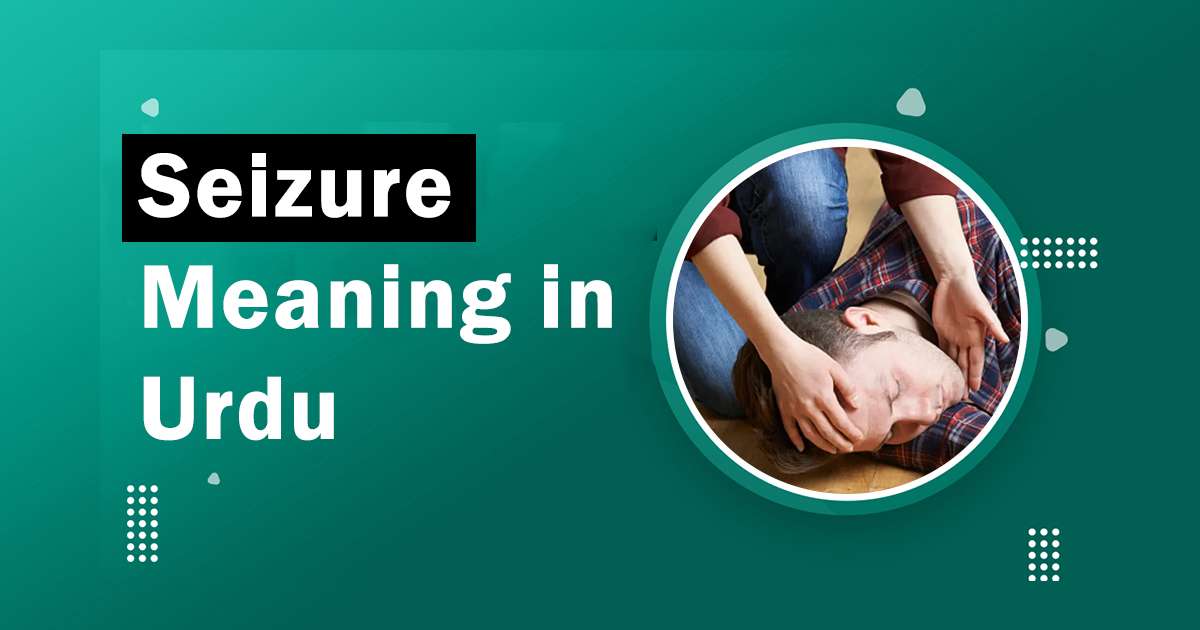There is a seizure meaning in Urdu to allow the user to understand how seizures are understood in Urdu-speaking regions, as often you need to translate from one language to the other to get into the actual context of medical terminology. Other episodes that usually happen as a result of trauma or injury to the brain last 30 seconds to 2 minutes, but they require immediate medical attention if they exceed the 5-minute mark.
سیزرز عام طور پر دماغ میں چوٹ یا زخم کے بعد ہوتے ہیں اور 30 سیکنڈ سے لے کر دو منٹ تک کے سیزرز معمول کی بات سمجھی جاتی ہیں، اگر یہ 5 منٹس سے زیادہ جاری رہیں تو یہ میڈیکل ایمرجنسی ہے۔
Seizures can significantly disrupt the daily lives of those who experience them. Although there is no remedy for those affected, proper care and treatment can substantially improve the quality of life. Typically, a person who has a seizure looks dazed and lost, often not knowing what is happening around them. Other seizure repercussions are shaking and falling without being aware.
مناسب طبی دیکھ بھال اور دوائیوں کے طویل استعمال سیزر کا شکار ہونے والوں کے زندگی کے معیار کو بڑھایا جا سکتا ہے۔ سیزر کے دورے کے بعد، عموماً متاثرہ شخص کافی بے ہوش اور بہت پریشان لگتا ہے، وہ اپنے ارد گرد چیزوں کا بہت احساس نہیں رکھتا ہے، کبھی کبھار وہ گرتا ہے یا جھلتا ہے۔
Types of Seizure in Urdu
Seizures are grouped into two basic categories: focal and generalized.
Focal Seizures
They appear in a particular region of the brain and are also referred to as focal seizures, meaning in Urdu جزوی دورہ. More categories for focal seizures include:
– Simple Focal Seizures: There is no unconsciousness involved in these. They may result in an involuntary shaking of a body part as well as alterations in sensory impressions (such as taste or smell).
– Complex Focal Seizures: These involve adjustments to awareness or perception. The individual might move repetitively and seem sleepy or disoriented.
Generalised Seizure Meaning in Urdu عام دورے
These affect both sides of the brain from the onset.
They are subdivided into:
Absence Seizure Meaning in Urdu: غائبی دورے (Petit Mal): They are brief disruptions in consciousness that usually last a few seconds. They typically include staring spells and can feature subtle physical movements, such as eye blinking.
– Tonic-Clonic Seizure (Grand Mal): These are characterized by both muscle stiffening (the tonic stage) and rhythmic jerking movements (the clonic stage). They may last several minutes and usually involve loss of consciousness.
– Atonic Seizure (توانائی کا ضائع ہونے والے دورے) Meaning in Urdu: Atonic seizures are also called drop attacks; they cause a sudden loss of muscle tone, resulting in falls or drops.
– Myoclonic Seizure: Sudden, brief jerks of the muscles.
– Tonic Seizure: Sudden stiffness in muscle,
– Clonic Seizure: They consist of rhythmic jerks, usually of the face, arms, or legs.

Causes of Seizures
There are many causes of seizures, such as:
- Epilepsy (مرگی کے دورے): A chronic condition characterized by recurrent, unprovoked seizures, meaning in Urdu. It can be idiopathic (no known cause) or symptomatic (associated with an identifiable cause, such as a brain injury).
- Head Trauma: Injuries to the brain from accidents, surgeries, or strokes may also cause seizures.
- Infections: Brain infections such as meningitis or encephalitis may cause seizures.
- Genetic Factors: A hereditary component exists in some seizure disorders.
- Systemic Disorders: Seizures can be seen with metabolic imbalances like hypoglycemia, hyponatremia, or hyperglycemia.
- Substance abuse Withdrawal from drugs or alcohol and poisoning from specific chemicals can cause seizures.
- Febrile seizures: High fevers in children, called febrile seizures, can lead to seizures.
- Neurological disorders: seizures can be a symptom of conditions like Alzheimer’s disease and multiple sclerosis.

Symptoms of Seizures
Depending on the type of seizure, the symptoms differ significantly.
Common symptoms include:
Motor Symptoms: Uncontrollable movements or jerking, muscle rigidity
Replacing the fifth group of symptoms—sensory symptoms (the altered sensations, such as tingling, numbness, and such)—that confuse and disorient people are the natives in Warrior Cats: Sensory System, which does what the name suggests.
- Psychological Symptoms: mood or emotional changes, feelings of déjà vu, and dread.
- Autonomic Symptoms: Shift in heart rate, sweating or gut feelings
- Cognitive Symptoms: loss of awareness, confusion, or memory lapses.
Diagnosis of Seizures
Diagnosing seizures is a multistep process; it can take a few visits to find a cause.
- Medical History: A thorough history of the seizures, including any precipitating factors, frequency of events, and events detailed in terms of their features, is key.
- Neurological Exam: To evaluate brain function and check for neurological issues.
- Electroencephalogram (EEG): A test which records the electrical activity of the brain that can show abnormal patterns which may indicate seizures
- Imaging Studies: MRI or CT scans may reveal structural changes in the brain that could be responsible for seizure activity.
- Blood tests: These identify metabolic or genetic causes of seizures.

Treatment of Seizures
Treatment aims to control seizures, minimize side effects, and improve quality of life. Options include:
– Medications: Antiepileptic drugs (AEDs) are the most effective form of treatment. The choice of medication depends on the type of seizure, age, and overall health. Common AEDs include phenytoin, valproate, and carbamazepine.
– Lifestyle Modifications: Adequate sleep, stress management, and avoiding seizure triggers (like alcohol or flashing lights) can help reduce seizure frequency.
– Surgery: In cases where seizures are resistant to medication, surgical options like resective surgery (removal of the seizure focus) or palliative procedures (to reduce seizure frequency) may be considered.
– Vagus Nerve Stimulation (VNS): A device implanted under the skin sends electrical impulses to the vagus nerve, which can help reduce seizures.
– Dietary Therapy: The ketogenic diet, high in fats and low in carbohydrates, can be effective in controlling seizures in some individuals, especially children with certain types of epilepsy.
– Responsive Neurostimulation: A device implanted in the brain detects abnormal electrical activity and delivers stimulation to prevent seizures.

Impact on Individuals and Society
Seizures can have a profound impact on individuals, affecting their physical health, emotional well-being, and social life. The unpredictable nature of seizures can lead to anxiety, depression, and a reduced quality of life. Individuals with seizures may face challenges in education, employment, and social interactions.
– Physical Impact: Recurrent seizures can lead to injuries, falls, and in severe cases, status epilepticus—a prolonged seizure requiring emergency medical intervention.
– Emotional and Psychological Impact: Living with seizures can cause significant stress and anxiety. The fear of having a seizure in public or while engaging in activities can lead to social isolation.
– Social and Economic Impact: Seizures can affect an individual’s ability to drive, work, and maintain relationships. The stigma associated with seizures can lead to discrimination and reduced opportunities.
Seizure first aid
knowing how to provide help during a seizure is crucial:
– Stay Calm: Remaining calm is important to maintain a sense of control and reassure others. It helps create a safe environment for the person experiencing the seizure and those around them.
– Protect the Person: Move any nearby objects that could cause harm, such as sharp or hard items. Cushion the person’s head with a soft object to prevent injury, and loosen any tight clothing, especially around the neck.
– Time the Seizure: Observe and note the duration of the seizure. If it lasts more than five minutes, or if multiple seizures occur without recovery in between, seek immediate medical help.
– Do Not Restrain: Avoid restraining the person during a seizure as it can cause injury. Allow the seizure to run its course without trying to hold them down or restrict their movements.
– Do Not Put Anything in Their Mouth: Contrary to popular belief, do not insert anything into the person’s mouth during a seizure. It can cause injury to their teeth or jaw. There’s no need to prevent them from swallowing their tongue.
– Recovery Position: After the seizure ends, gently roll the person onto their side into a recovery position to help maintain an open airway and prevent choking. Stay with them and provide reassurance until they fully recover.
These simple steps can help ensure the safety of someone experiencing a seizure without overwhelming the situation.
It is essential to recognize that seizures are complex neurological events with a variety of causes and manifestations. For individuals with seizures to improve their quality of life and manage seizures effectively, proper diagnosis and treatment are essential. The advancement of medical research continues to provide a better understanding and innovative treatments, offering hope for improved outcomes. The public needs to be aware and educated about seizures to foster a supportive environment and reduce the stigma associated with this condition.
For further information or consultation regarding surgical care related to conditions like these, you can reach out to Dr. Abdullah Iqbal, a trusted and experienced general surgeon.
- 5 Bawaseer Ki Alamat Aur Unse Bachne Ke Tarike in Urdu - May 29, 2025
- Important Care after Laser Surgery for Hemorrhoids, Fissure or Fistula - May 29, 2025
- What Is Gynecomastia? Causes, Symptoms, and Treatment Options - May 29, 2025

